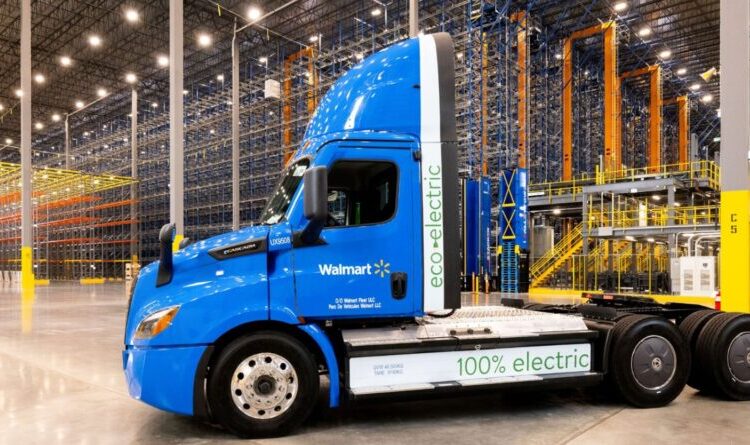Quite often, I see Walmart’s electric Ford delivery vans (Ford E-Transits) in my area. It’s so exciting, not just because it’s another electric vehicle model (I get excited about all of them), but also because it clearly portends a new era of transportation in which EVs save money, are practical enough for high use cases, and just overall make business sense (Walmart wouldn’t be doing it if it didn’t make pure cash-money business sense). Walmart is not the brand that comes to mind for me when I think of corporate leaders in cleantech adoption, sustainability, or progressive values in general. But when I think of Walmart, I do think of a company that will do anything legal (and maybe some things illegal, if it can get away with them) to save money and make more in profits. (Note: My first real job was at Walmart, because it was practically the only place in my area that could hire 15 year-olds — I forget the workaround it used in order to do that, but I think the only other option was bagging groceries at Publix or something like that.)
So, it’s uplifting yet again to see that Walmart is electrifying some of its semi truck fleet. Well, it’s electrifying three trucks in Canada, but this is surely just the start. Walmart Canada is rolling out three electric semi trucks in British Columbia at its grocery distribution centre in Surrey. In particular, it will use Freightliner eCascadia electric semis.
Walmart intends to electrify 100% of its fleet. For now, these first three electric semi trucks are expected to prevent the use of 100,000+ liters of fossil fuel per year.
“Putting our first electric semi-trucks on the road in British Columbia is an important milestone in our regenerative efforts as we do our part to reduce Walmart Canada’s carbon footprint. The introduction of three electric semi-trucks at our Surrey distribution centre is just the first step towards our ambition of a 100% alternatively powered fleet and we look forward to continuing our journey,” said Aaron Ritter, Director, Transportation.
The Freightliner eCascadia can travel 400 kilometers (250 miles) on a full charge. Each truck will travel approximately 110,000 kilometers (68,350 miles) each year. That’s a lot of driving, and at lower fuel and operational costs, that should mean a lot of financial savings.
“Reducing greenhouse gas emissions is key to battling climate change. While there has been an uptake in electric cars for personal use, industry has been lagging in making the shift to electric vehicles. Walmart Canada is changing that with their new electric fleet of trucks,” said Mayor Brenda Locke, City of Surrey. “I am very pleased that the first phase of Walmart Canada’s electric fleet will have Surrey as its homebase. I commend Walmart Canada in taking the lead to transition their vehicles to clean electric power. I look forward to seeing the electric trucks on the roads of Surrey and hope to see even more of them as Walmart Canada adds to their electric fleet.”
I certainly agree with the sentiment and the points from Brenda Locke. It does feel like the trucking fleet is too slow to transition to electric powertrains. However, there are also reasons for that, and the good news is that the technology and market is now ripe to electrify more and more big trucks. And as I said above, Walmart isn’t doing this primarily to fight dangerous climate change. The company is doing this to save money. But hey, whatever it takes — just electrify.


